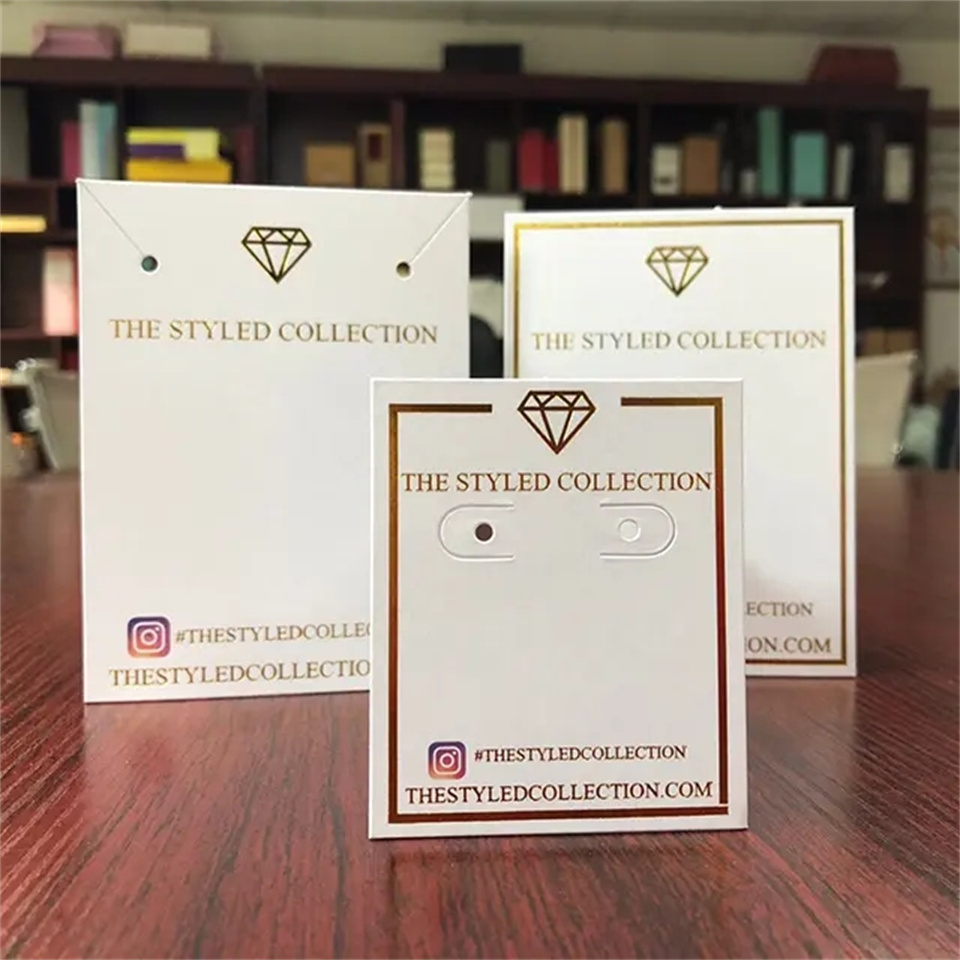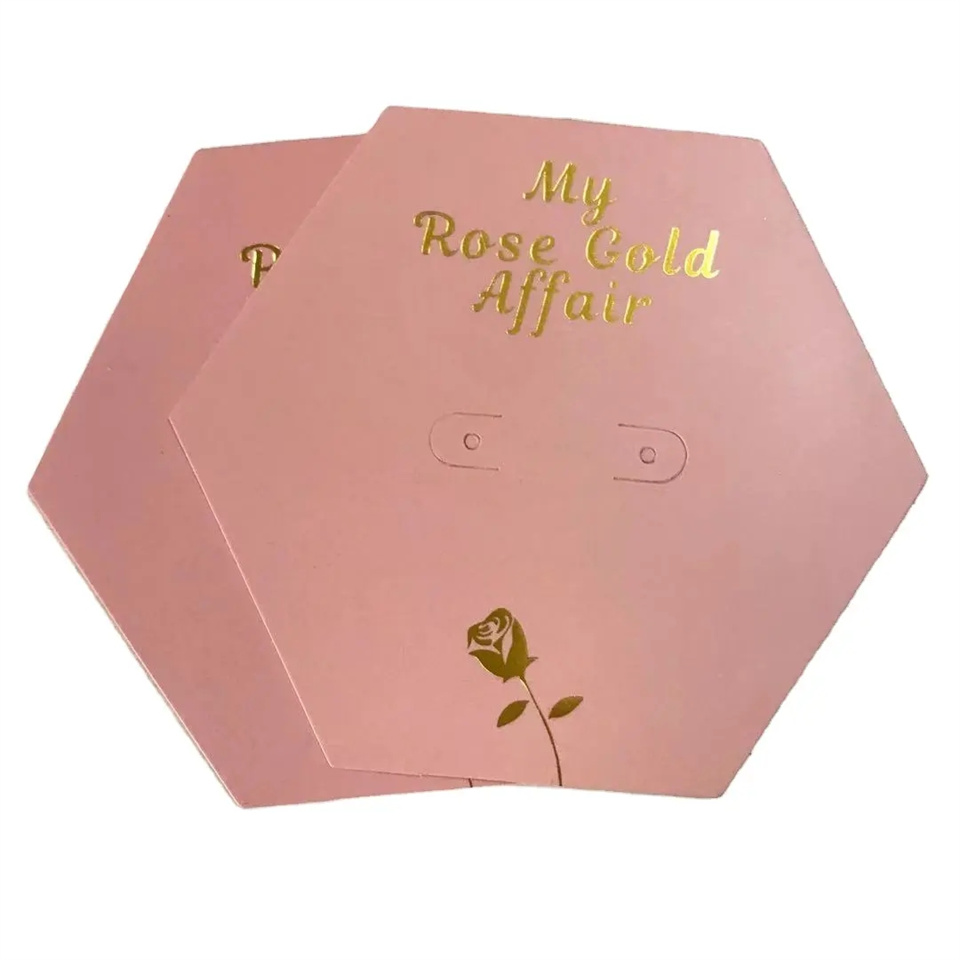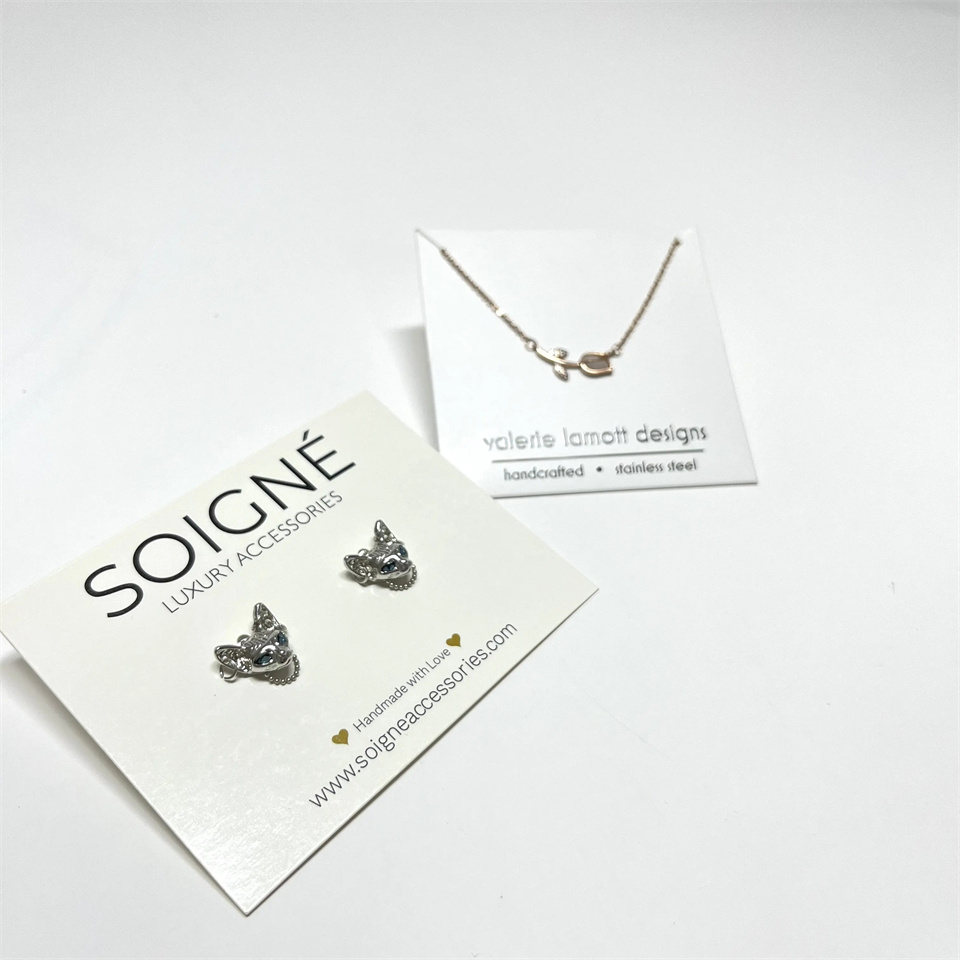How does jewelry displaying cards work for jewelry shops and retailers?
2024-06-18 15:39
Jewelry displaying cards are an effective tool for jewelry shops and retailers to showcase and organize their merchandise. These cards serve multiple purposes, from enhancing visual appeal to ensuring practical handling and inventory management. Here's how they work and their benefits:
Presentation and Visual Appeal
Aesthetics: Jewelry display cards enhance the presentation of the jewelry, making it more attractive to potential buyers. The cards often come in various designs, colors, and finishes that complement the jewelry and the store's branding.
Branding: Cards can be customized with the store’s logo, name, and other branding elements, helping reinforce brand identity and professionalism.
Organization: They keep jewelry pieces, especially smaller items like earrings, rings, and pendants, neatly organized and easily viewable by customers.

Practical Benefits
Protection: Display cards protect jewelry from tangling, scratching, and other damage. For example, earring cards keep pairs together and prevent loss or misplacement.
Inventory Management: Cards often have space for product codes, prices, and other important information, making it easier for staff to manage inventory and keep track of stock.
Ease of Handling: Display cards make it easier to handle, store, and transport jewelry without causing damage. They can be easily displayed in showcases, on hooks, or in display racks.
Security: By organizing jewelry on cards, it becomes easier to monitor and secure valuable items, reducing the risk of theft or loss.
Types of Jewelry Display Cards
Earring Cards: These have holes or slots to secure earrings, keeping pairs together and easily visible.
Necklace and Bracelet Cards: These often have slits or hooks to secure chains and prevent tangling.
Ring Cards: These are designed with slots or holders to keep rings in place and display them effectively.
Customization Options
Material: Display cards can be made from cardboard, plastic, or other materials depending on durability needs and aesthetic preferences.
Size and Shape: They come in various sizes and shapes to accommodate different types of jewelry.
Printing and Finishing: Custom printing options allow for branding, while various finishes (e.g., matte, glossy) enhance the look and feel.

Usage Tips
Labeling: Ensure that cards are labeled with relevant information like price, material, and care instructions.
Consistency: Use consistent card designs to maintain a cohesive look throughout the display.
Rotation: Regularly update and rotate displayed jewelry to keep the presentation fresh and appealing to repeat customers.

In summary, jewelry display cards are a versatile and practical tool for jewelry retailers, aiding in presentation, organization, protection, and inventory management. They play a crucial role in enhancing the shopping experience and supporting effective retail operations.
Get the latest price? We'll respond as soon as possible(within 12 hours)
